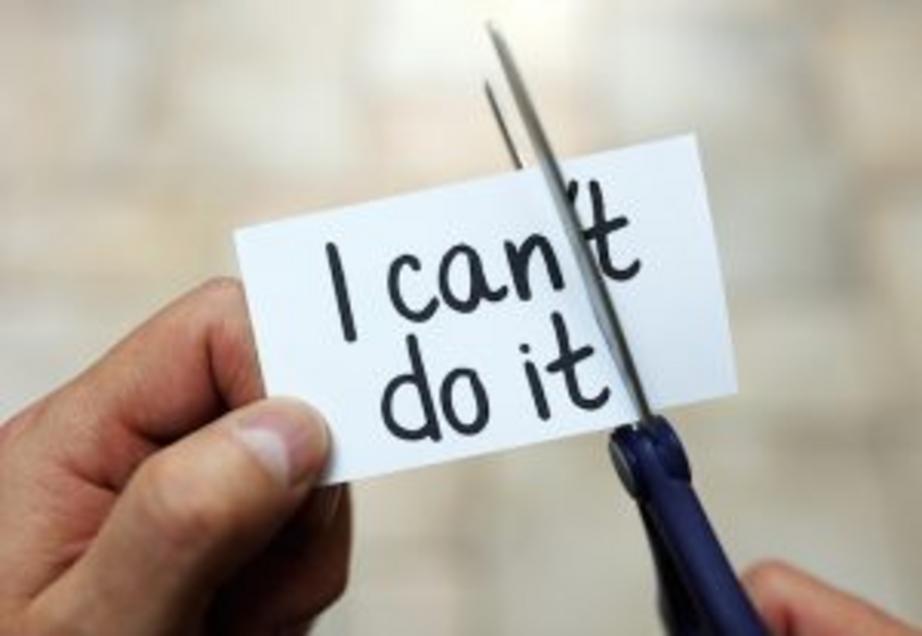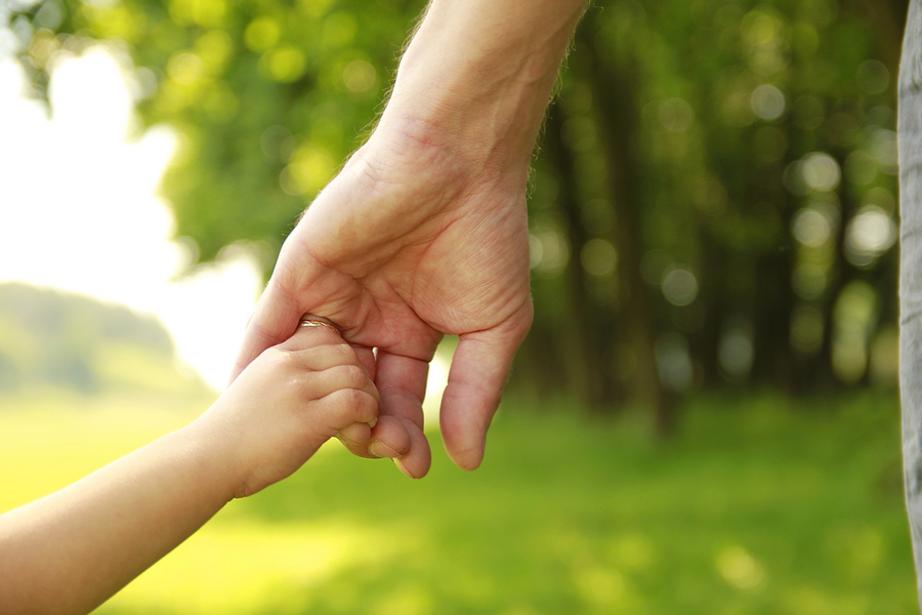Parents of special-needs kids: seven strategies to save your sanity
Let’s face it, raising kids isn’t easy. To make things even more complicated, not one of them managed to come out of the womb with a user’s manual. The reality is, every child is unique and each child’s path to healing will take its own unique course. As parents work diligently to unravel their individual child’s constellation of symptoms and the root causes of those symptoms, it’s easy to get overwhelmed and feel completely stressed out. There are some things that can make the journey a little gentler. Here are seven strategies to overhaul your energy and improve your daily life:
1. Remember that your child is doing the very best s/he can.
Yes, even when your child is in full-on meltdown mode, she is doing the best she can at that moment in time. When challenges pile up, it is really easy to become overwhelmed.
“I just need the yelling/crying/kicking/no-no-no to stop!!” Sound familiar? We’ve all been there, but it’s important to remember: Empathy before irritation and frustration.
One thing that was incredibly helpful for me was being able to watch a video that simulated what it might be like to have autism or sensory processing disorder. A regular walk through a store, that most of us take for granted, is filled with disconcerting noises, colors and movement that can only be described as a chaotic tornado of confusion. The brain’s inability to prioritize sensory stimuli creates a plethora of physical, emotional, and mental discomfort. Watching the 20-minute simulation left me intensely nauseous with a throbbing headache. I found myself pining for solitude in order to remove the mental confusion I found myself grappling with as a result of the stimuli. It was a memorable experience that left me profoundly empathetic for the struggles our children go through each day. When our daughter starts to struggle when we are out, the first thing I do is take inventory of the noise level, number of people, movement, and whether the setting is familiar or new. “What might it be like to be her right now?” is a question that keeps frustration low, empathy high, and our feet on the ground. (And since I can’t fly, that is a really good place for my feet to be!)
Most of our children also have multiple medical issues going on. Some have painful gastrointestinal issues, uncomfortable allergies, or some other source of physical pain or discomfort. Chronic pain can make anyone act out—even adults. Keeping that in mind when your child struggles can help you hold onto what is true, “my child is doing the best s/he can right now.” I look at what some kids are coping with and I know I would not be able to cope well with it, never mind do it with a smile on my face. Yet, many of our children do go through their challenging days with plenty of smiles and giggles to balance out their meltdowns. I have enormous respect for the resilience of their little spirits. It is just a piece of knowledge to keep at the ready, because it will help you hold empathic rather than frustrated energy. I guarantee that empathy will also feel much better than frustration to both you and your child.
2. It takes time to feel comfortable in new places. Let your child lead.
After years of being stuck in the house, our daughter suddenly began to love going new places (YAY!!!). She became interested in museums, aquariums, children’s theme parks, movies, etc. But the first time she visited a new place, her anxiety would be high. Each consecutive time we returned, she became more familiar with the environment. She became more relaxed, adventurous, and willing to try new things while there. For example, a couple of summers ago we ventured out to a children’s story-based park. While we hoped that she would enjoy it, we let go of all expectations. We knew that we had to be prepared to leave at any time if things started to deteriorate — even if it was five minutes after paying the entry fee. Fortunately, the first trip went well. She focused on dancing at Duke the Dinosaur’s Dance Party, riding in Cinderella’s pumpkin coach and hopping on the Huff Puff and Whistle Railroad, riding several laps around the park. We just followed her lead and stuck with those three activities. Any other suggestion was met with a fairly panicked, anxious, edgy “No! No thank you!”
 Flying the Dutch Shoes
Flying the Dutch Shoes
We returned to that same park just a few days later. While the second trip saw her return to those same three activities, this time she added a treehouse slide and visits to all of the storybook animals. The third visit, she returned to those five activities, but added a small playground and misting tent to her repertoire. By the fourth visit she was riding the Polar Coaster, Dutch Shoes, and engaging in many of the other activities there. Being mindful of her comfort level, sensory stimuli and how she was feeling in general all helped to make it successful for all of us.
We also learned to allow space for change. The following year when we went back to this same park, I admit that I expected her to dive right back in to all the same activities she enjoyed the year before. I mean, she’s a routine kid after all. But she did not. She didn’t want to go on any of the rides at all. At first, I felt concerned. Why she didn’t want to do any of the things she enjoyed so much the year before? Then I realized I was pushing my agenda. Who cares if she didn’t want to ride the Polar Coaster or Dutch Shoes? People’s preferences change all the time, so why wouldn’t hers? Why should I read anything into the situation? I refocused on the moment and enjoyed just being with her outside in the midst of families having fun in the summer. Sure beat being stuck in my living room!
We have seen this play out time and again. Any new place requires an adjustment period to learn the layout and feel safe. If we worry that she might be scared, anxious, or not do well in a new situation, she seems to sense our worry and responds accordingly–with anxiety. It’s almost as if her internal thoughts are, “Mom and Dad feel all tense and anxious. I don’t like how that feels at all, it makes me tense and anxious . . .” and then she’ll act that out. If we can catch ourselves at the beginning of worry and short circuit it, it always seems to go pretty well. If we relax, she relaxes. If we give her space, she branches out.
3. You are doing the best you can.
Let’s face it-some days are just overwhelming and nothing goes right. Whether you are a prisoner in your house, feeling hostage to a disability, exhausted with no relief in sight, or what have you, some days simply feel like too much. Then again, life rarely goes as planned. Being prepared for challenging days helps a lot! Know that everyone has them to one degree or another. Finding a way to carve out even 10 minutes for yourself in the morning, before everyone is up will go a long way towards helping you stay positive, grounded, and ensure that you are coping well. Setting the alarm clock for 10 minutes before the children wake up (yes, even if it is 3 a.m.) can help you start your day on a positive, centered note that will increase your patience, mental clarity, and strength. It will help you to feel positive and manage challenging moments with grace.

Not good at meditating on your own? Try some of the meditations on YouTube. There are tons of free, short guided-imagery selections, meditations, progressive muscle relaxations, Abraham-Hicks talks, etc. Try a Loving Kindness Meditation, Abraham Hicks General Well-Being meditation, and a progressive muscle relaxation. Give it a week. By the end of the week you will notice a change in how you cope throughout the course of your day. Things that once irritated you will roll off your back. You will be less reactive and more level headed.
If meditation is not for you, try 10 minutes of yoga, gentle stretching, or, if you have a partner who can be home, take a 10-minute walk outside. Whatever activity you choose, make it a mindful one. When you go for a walk or practice yoga, work on staying out of your head. Instead of thinking, notice how your body feels when you move. Feel the release of your muscles as you stretch. Feel your feet as they connect with the earth. Notice the sounds of the breeze rustling through the leaves, revel in the sweet song of the birds. Pay close attention to the warmth of the sun on your face and the caress of the wind on your skin. Practicing this kind of present moment mindfulness provides a much needed release. It allows you to rejuvenate and the positive impact will carry you through your entire day. It minimizes depression, anxiety, and frustration.
If you are able to find short moments throughout the day to practice mindfulness, that will help a lot. When you are washing the dishes, focus on the feel of the dishwater on your hands. Is it warm? Do the soap suds feel soft? Do they tickle? When you sip tea, notice how it feels in your mouth, how the warmth glides down your throat, how it feels when it hits your stomach. These moments of clearing your mind, help to eliminate ‘mental debris’ and buoy your spirits.
4. Attitude, attitude, attitude.
Attitude is everything. I have no idea who coined that phrase, but I love it. Our children are far more sensitive than most of us are. They know when someone doesn’t believe in them. They know when others have low expectations, or are easily frustrated. They have internal radar that easily identifies any kind of negativity, and, believe me, they react to it.
Before you tackle everyone around you, start with yourself. Take an inventory of your beliefs. Every child has limitless potential. Don’t let a label — no matter how big or small — define your child’s abilities or future. None of us are fortune tellers, and we can’t possibly know what they’ll grow up to do. Letting go of fears of what might and might not happen, while staying in the present moment, frees us up to truly enjoy today. Don’t miss out on today’s precious moments, because you are worried about what might happen tomorrow. Your power is in the now . . . not in tomorrow. Focus on the smiles you get now. Celebrate the communication that is there. Even crying is communication! A crying child is telling you that s/he is not happy, is hurting, angry, or wants something that has been denied . . . That’s great! Take a deep breath and center yourself while reminding yourself that this is simply communication. Don’t attach a “good” or “bad” qualifier to it, simply accept it as existing communication. This will give you the mental space you need to figure out how to respond thoughtfully rather than react emotionally. What do you need to do to meet the need in front of you right here, right now?
Find that place in your heart where you believe in healing and visit it often. Believing in healing does not mean that you will necessarily get exactly what you want. It may not be able to reverse paralysis, for example, but it will open the door for healing the heart, finding peace and maximizing the potential of the present moment. That is a formula that results in a full, satisfying, positive and happy life. Practicing this will provide the same treasures for your child.
5. Be aware of your own energy.
Have you ever walked into a room with two people and felt tension in the air? Tension so palpable you could cut it with a knife? Instantly, you realize that the two people were arguing and you walked right in the middle of it. The energy in the room feels ominous and negative. Our children feel energy that way too, only magnified. They feel our stress, anger, disappointment, fear, anxiety, happiness, joy, expectation, etc. . . . to a power of ten.
It took me a little bit, but I realized that when I was anxious, my daughter felt my anxiety and would react negatively to it. For example, while dealing with a serious health issue of my own, I experienced a good deal of anxiety around it. I had suddenly lost some vision and was dealing with an immune system that had gone haywire. Added to that, was the fact that the top retinologists in the world had no idea what was wrong. Worrying about what could happen while hunting down a diagnosis created monumental stress and fear for me. At the same time, our daughter seemed to be having more difficult behaviors. She was less cooperative, more resistant, and grouchy. When I was able to be mindful and practice Reconnective Healing on myself my anxiety diminished and, lo and behold, so did her behaviors.
There was a time some years ago that I could come home from a long day at work, overtired and frustrated, and if I didn’t manage to get a grip on that energy, she felt it without my even saying a word. As soon as the door opened and I walked through it in a black cloud of “ick,” she immediately became edgy, grumpy, or whiney. When I pulled it together and transformed my energy, she returned to the happy, generally cooperative kid that she is. These days I have a lot of tools and rarely walk through the door feeling that “ick,” and she is thriving.

Maintaining good energy could not be more important than when you are in public and a meltdown starts. You know . . . that frenzied crying, yelling, hitting tornado that strikes right in the middle of the grocery store. The kind where it feels like time has stopped and every breathing human in the store is staring at you and your child with judgment. Then, predictably, the fear rises up . . . these bystanders don’t understand what is really happening and maybe they think your child is a spoiled brat and you’re a crappy parent. Despite those initial instincts, this is not a good time to educate your bystanders on autism, sensory processing disorder, or other disabilities that contribute or create the
meltdown in aisle nine. It is also a bad time to deliver a state of the union address on how stressed out you are, how much money you have spent on recovery, and how lucky they are that they don’t understand what your life is like. The energy that you are in while delivering those extemporaneous speeches will work against you. Your goal in that moment is to safely get your child out of that situation, and not prolong the situation or exacerbate it. It is also an especially bad time to announce the name of your child’s disability out loud. Although it might make you feel better for the 14 seconds it takes you to say it, your child will have heard it, and the only thing it will have accomplished is underscoring that something is “wrong” with them. Trust me, that is a message that they don’t need to hear. All it will do is undermine their self-esteem. Tension, frustration, anger, and anxiety only exacerbate the challenging behaviors and emotions in this kind of situation.
This is, however, a remarkably good time to shore up your positive energy, check your emotions and expect your child to pull it together in order to safely leave the store. Mind you, your child is unlikely to pull it together that quickly, but keeping your energy in a place that conveys, “Everything is okay. I know you can do this. We are okay” will not escalate the situation. It will help you figure out the easiest, safest route out of the store, and, believe it or not, it will also minimize your own stress in that situation. It is easier said than done, but if you change your own energy to be softer, more open, patient and loving, it will change your child’s energy in return. They will feel secure and loved, and they will settle faster. Try it! You’ll be surprised at how well it works.
6. Be mindful of the energy and attitudes of those around your child and be a buffer!
Other people’s energy and attitudes have a profound impact on your child. We saw this early on for our daughter. Her first year in preschool was challenging to say the least. The team could see nothing beyond autism. They had a whole list of “she will never ___.” And she knew it. Interestingly, the second year of preschool she was placed in a classroom with two teachers who saw more than her challenges. They expected her to perform much like her peers, and boy did she rise to the occasion. She had a job in the classroom just like her peers. She followed her classmates to and from activities without additional prompts or help. Suddenly we began hearing about her strengths and flexibility, all simply because she was with two teachers who chose to focus on the positive. She looked so happy and proud of herself that year, it was truly heartwarming.
Interestingly, when she moved up to kindergarten in a different building, there was a reversion to the team emphasizing her differences. She had an undeniable, across-the-board regression. We met with the administration and expressed our concerns and insisted that people who work with her believe in her limitless potential and be optimistic and nurturing with her. We insisted that they not forecast what she will grow up to be, and allow her to define herself and her life as she grows and flourishes. We asked that they work on not worrying about what she might not do and instead hold the expectation that she will rise to whatever the occasion may be. Once the focus shifted from her differences to her strengths, and the expectations and energy were positive, her regression reversed and she began to thrive again. We never hesitate to speak up about people’s focus, expectations, tone of voice, and demeanor with her. We deeply understand that she is sensitive, fun-loving, and playful. But we also know that she has a tendency to be anxious. It has been important to make sure that people who work with her understand how to cajole her out of stuck places, rather than scold her out of them. Ensuring nurturing, positive energy and an unwavering belief in her ability to rise to almost any occasion has been undeniably transformative.

Never hesitate to advocate for your child and insist on people who believe in their limitless potential. It makes all the difference in the world. The more you hear about your child’s strengths, the better you will feel. The better you feel, the better your child will feel. The better your child feels the better s/he will do. What you focus on grows; so focus on the positive and water it often.
7. Energy at home is key.
The idea of holding comfortable energy is equally if not more important on the home front. If your spouse feels burnt out and negative, run interference. Give them a break to ensure that the energy remains as calm and positive as possible. We all know that a long meltdown is hard to get through. If you have a partner, take turns at managing the behavior du jour so that no one hits their boiling point. If your spouse is simply having an off day and is grouchy — maybe they had a bad day at work, a headache, or the maybe the mounting bills are weighing on them — start a fun activity with your child. Get them out of the house and let your partner relax, take a walk or a nap while you enjoy connecting with your child. Develop a code to signal when it’s time for the other to go take a break, rejuvenate, and transform negative energy into positive.
If you are a single parent, this is harder to accomplish. If there is anyone who is able to provide some respite services for you, take advantage of that so that you can stay present, grounded and centered. If family and friends are not an option to help out, check with the regional disabilities organization to see how they might be able to help.
These strategies won’t make all your problems disappear, but they will make your daily life feel better and help you keep your sanity. If you are sane and feel better, I guarantee that you and your child will feel happier and healthier. At the end of the day that is what it is really all about.


